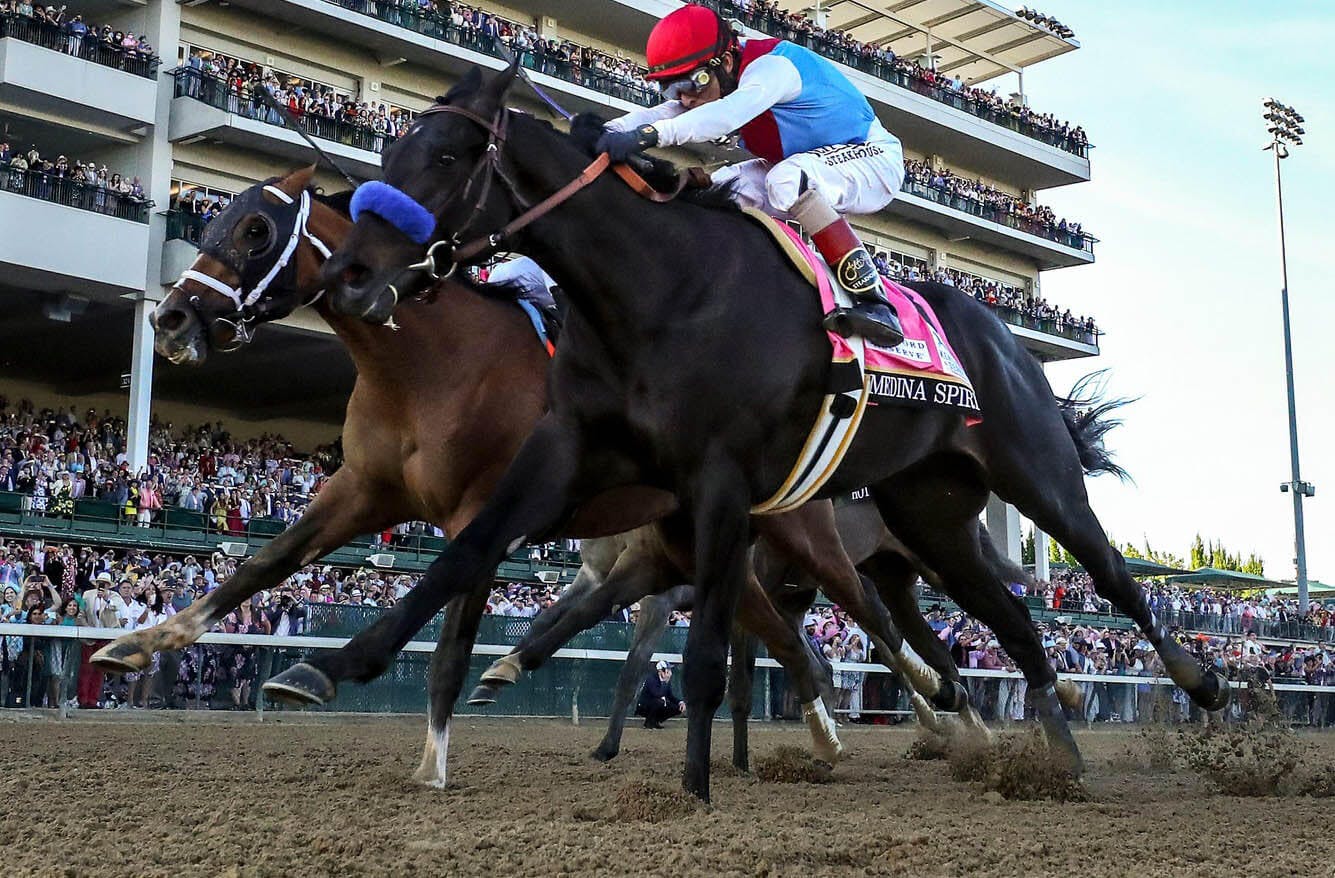It has been said that beauty is in the eye of the beholder. Well, so is wagering value.
As much as ascertaining value is a key element in handicapping the horse racing betting odds, it’s as subjective as any other part of trying to pick a winner. What could be an overlay to one bettor may be seen as an underlay by another.
There might not be a clear-cut answer but that doesn’t mean it should be ignored. Value is too important to be pushed into the background during a day at the races, especially with the 2023 Preakness Stakes fast approaching on Saturday, May 20.
Why you should look for value in horse racing
Value should play a lead role in your handicapping repertoire since it allows you to wager more efficiently and effectively by focusing your bets on horses that offer an enticing risk/reward ratio.
As much as the pursuit of winners is paramount, there are times when backing a horse at low odds does not make sense. Maybe that horse is the most logical winner, but if you view it as only marginally better than a couple of other main contenders, then taking a short price on it is too risky.
In a race like the Kentucky Derby, for instance, even a horse that is a "standout" on paper will have to negotiate a 20-horse Kentucky Derby field full of runners who could tackle the great unknown of the 1 1/4-mile distance with aplomb, while the "standout" struggles.
It’s true we’ve seen horses like Secretariat run the race of their lives at short prices in the Kentucky Derby, as the betting public expected. But there are also horses like Arazi, who get quickly forgotten after burning plenty of cash in the Run for the Roses. A good horseplayer can’t simply dwell on either the positive or the negative alone.
Even if you believe the 6-5 favorite is the most likely winner of the race, if you view a 10-1 shot as being close to the chalk in terms of ability, it’s obvious that backing the horse at longer odds makes more sense — especially in the long run when the percentages will ultimately work in your favor.
Look at it this way: If your top choice at 6-5 wins 30% of the time, your return off 10 win bets will somewhere in the neighborhood of $13. Now if your 10-1 shot wins just 15% of the time, your return off 10 bets will be $33.
That’s basically how value works.
Horse racing value explained
While some might interpret value as simply betting on longshots, it is more precisely betting on a horse whose odds are higher than they should be. Some horses who are priced at 40-1 can be underlays. They might actually deserve to be 100-1. Meanwhile, if you believe a horse should be the 3-1 or 4-1 second choice, but it’s actually 10-1 and the sixth option in the wagering, then you should try to put value to work for you.
In the 2011 Kentucky Derby, Dialed In was the 4-1 favorite off a win in the Florida Derby. While he may have had the best recent résumé in the race, he was far from a standout. Taking a horse like eventual winner Animal Kingdom, who was 20-1 and was largely an unknown quantity on dirt, was better value for bargain hunters.
Equally reflective of the way value works, there might be a time when a 6-5 favorite actually offers some value. Not a lot, but some. Those occasions are the times when you believe that 6-5 choice is so much better than its rivals that 1-2 odds seem a better fit.
Best of all, value rests with you. When it comes to pari-mutuel betting, you’re the one deciding who should be 6-5 and who deserves to be 10-1. While the morning-line might seem like a big help, in the end, it’s your belief in the differences between each horse in the field that dictates whether the odds on the tote board are askew and you should try to capitalize on it.
Yes, value is indeed in the eye of the beholder.
How to spot value in horse racing
There are many different factors to consider when trying to spot value in horse racing, but here are some key points to keep in mind:
1) Study the form: Look at the horse's recent performances and compare them to the conditions of the upcoming race, such as the distance, track surface, and class level. Look for horses that have performed well under similar conditions and may be undervalued by the betting market.
2) Take advantage of unknown quantities: There’s a familiar adage at the track that goes “never take a short price on a horse trying something new.” When a horse is a first-time starter or is trying a new distance or surface, no one can be truly certain how the horse will fare. Look toward the pedigree and trainer for a clue as well as the morning workouts, and if the price seems fair, take a swing. In a race like the Kentucky Derby, there is almost never a horse in the race that has run the distance of 1 1/4-miles, so that unknown will always exist in the Run for the Roses. That makes shopping for value in the Derby all the more important.
3) Consider the jockey and trainer: Experienced and successful jockeys and trainers can often give their horses an edge. Look for horses that are ridden by jockeys who have a high win percentage or trainers who have a reputation for producing winners. When a horse gets a meaningful jockey upgrade from the last race, it can signal "intent" to win that day.
4) Analyze the odds: Look for horses that have longer odds than you think they should. This can indicate that the betting market is underestimating their chances of winning.
5) Evaluate the competition: Consider the quality of the other horses in the race. If there are weak contenders, this can increase the value of other horses in the field. Field size can also have a major impact on finding value. In a race like the 20-horse Kentucky Derby, a 3-1 win proposition is hardly appetizing in most cases. But 3-1 in a six-horse field could represent great value based on all the evidence. A smaller field also decreases the chances of luck playing a role in the wagering. The more horses there are in a field, the greater the likelihood a horse could run into traffic trouble.
6) Watch for late money: If you notice that a horse's odds have suddenly dropped significantly just before the race starts, this could be a sign that bettors with insider knowledge or expertise are putting money on that horse.
Be wary of exacta probables and multi-race will pays involving races late in the card too. If a horse is involved in exactas that are relatively low yet their win odds are relatively high, chances are good their win odds will decrease by post time.
If a horse is paying the second-lowest amount for a successful daily double but is fifth-choice in the win wagering, bettors should expect that win mutuel to decrease before the race is run.
Spotting value in horse racing requires careful analysis of multiple factors and a willingness to make informed judgments based on your research. It's important to remember that there is always an element of luck involved in horse racing, so even the most well-informed bettors can sometimes lose.
Consider the case of Candy Boy, who took a bet of over $1 million to win in the 2014 Kentucky Derby just before post time, which knocked his odds down from 16-1 to 9-1. Obviously, that bettor thought that they knew what they were doing, but Candy Boy finished a distant 13th that day.




















